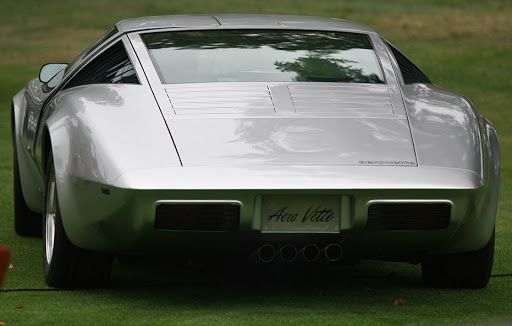You are using an out of date browser. It may not display this or other websites correctly.
You should upgrade or use an alternative browser.
You should upgrade or use an alternative browser.
Reply to 2009 Corvette ZR1 Thread
- Thread starter Swap fan
- Start date
- Replies 53
- Views 3K
We may earn a small commission from affiliate links and paid advertisements. Terms
Not if you take care of it, they are supposed to out preform any piston engine in almost every way. My friend has a 2nd gen RX7 turbo, it has 200hp with the same displacement as a 1.3L piston engine.
*waits for celerity's response*

efhondakid
My name is Byron.
^ Think you could share some of that popcorn?
efhondakid
My name is Byron.
no...its all mine:

Id be so pissed. "Since you are all tired from running your ass off, here is some crisp, cool refreshing...POPCORN! Ahahahaha."
VTEC_CBR
Senior Member
HowStuffWorks "Principles of a Rotary Engine"lol sorry this is all what he told me. I dont really know a whole lot about rotary, he tried to explain but the diagrams and vids work better.
phyregod
!!YTINASNI
Insert random rotary fact here:
Chevrolet originally owned the rotary engine. It was put into a concept corvette. with.. 4 freakin rotors. The car was sexy beyond words for the year. And then they scrapped the whole thing. Engine, exterior, interior, all of it.

The 1973 concept. same exterior, but by 1973 it had a transversely mounted v8 in it. Yup, a mid-engine vette with a real suspension under it. Why they went so far backwards from that point is beyond me.
More eye candy:



Chevrolet originally owned the rotary engine. It was put into a concept corvette. with.. 4 freakin rotors. The car was sexy beyond words for the year. And then they scrapped the whole thing. Engine, exterior, interior, all of it.

The 1973 concept. same exterior, but by 1973 it had a transversely mounted v8 in it. Yup, a mid-engine vette with a real suspension under it. Why they went so far backwards from that point is beyond me.
More eye candy:



Its hella-neat how they work.
Fewer Moving Parts
The rotary engine has far fewer moving parts than a comparable four-stroke piston engine. A two-rotor rotary engine has three main moving parts: the two rotors and the output shaft. Even the simplest four-cylinder piston engine has at least 40 moving parts, including pistons, connecting rods, camshaft, valves, valve springs, rockers, timing belt, timing gears and crankshaft.
This minimization of moving parts can translate into better reliability from a rotary engine. This is why some aircraft manufacturers (including the maker of Skycar) prefer rotary engines to piston engines.
Smoother
All the parts in a rotary engine spin continuously in one direction, rather than violently changing directions like the pistons in a conventional engine do. Rotary engines are internally balanced with spinning counterweights that are phased to cancel out any vibrations.
The power delivery in a rotary engine is also smoother. Because each combustion event lasts through 90 degrees of the rotor's rotation, and the output shaft spins three revolutions for each revolution of the rotor, each combustion event lasts through 270 degrees of the output shaft's rotation. This means that a single-rotor engine delivers power for three-quarters of each revolution of the output shaft. Compare this to a single-cylinder piston engine, in which combustion occurs during 180 degrees out of every two revolutions, or only a quarter of each revolution of the crankshaft (the output shaft of a piston engine).
Slower
Since the rotors spin at one-third the speed of the output shaft, the main moving parts of the engine move slower than the parts in a piston engine. This also helps with reliability.
[SIZE=+1]Challenges[/SIZE]
There are some challenges in designing a rotary engine:
- Typically, it is more difficult (but not impossible) to make a rotary engine meet U.S. emissions regulations.
- The manufacturing costs can be higher, mostly because the number of these engines produced is not as high as the number of piston engines.
- They typically consume more fuel than a piston engine because the thermodynamic efficiency of the engine is reduced by the long combustion-chamber shape and low compression ratio.
Celerity
Well-Known Member
Paul Moller, a guy I actually know, had to build his own rotaries. www.moller.com. The only similarity is that they are Wankel principled. The Output shaft is also called an eccentric shaft.Fewer Moving Parts
This is why some aircraft manufacturers (including the maker of Skycar) prefer rotary engines to piston engines.
Smoother
Not exactly. It's a 3 stroke motor, so it's stroke and rotational combustion presence is used through 2/3 the 360 degree rotation. 2 strokes will go to 180. The Nissan twin-spark NAPS-Z motor did 180 degrees because it "attempted" to ignite the exhaust. Also, the reciprocation is in Inertial displacement, even though the eccentric shaft has a circular motion is follows on the rotor hub. Because the off-centered mounting on the Eccentric, there IS reciprocation. It's just minute and dampened by a rotational motion. Which the same can be said for a low-stroke piston popper on it's crank. Although that same stroke is able to soak a lot more of the "bang", and give low-displacement piston engines more torque in the cycle.All the parts in a rotary engine spin continuously in one direction, rather than violently changing directions like the pistons in a conventional engine do. Rotary engines are internally balanced with spinning counterweights that are phased to cancel out any vibrations.
The power delivery in a rotary engine is also smoother. Because each combustion event lasts through 90 degrees of the rotor's rotation, and the output shaft spins three revolutions for each revolution of the rotor, each combustion event lasts through 270 degrees of the output shaft's rotation. This means that a single-rotor engine delivers power for three-quarters of each revolution of the output shaft. Compare this to a single-cylinder piston engine, in which combustion occurs during 180 degrees out of every two revolutions, or only a quarter of each revolution of the crankshaft (the output shaft of a piston engine).
Slower
Not exactly. The frictional losses are less when measured at one place - But when you measure the rest they equal out.Since the rotors spin at one-third the speed of the output shaft, the main moving parts of the engine move slower than the parts in a piston engine. This also helps with reliability.
[SIZE=+1]
Challenges
[/SIZE]
There are some challenges in designing a rotary engine:
- Typically, it is more difficult (but not impossible) to make a rotary engine meet U.S. emissions regulations.
- The manufacturing costs can be higher, mostly because the number of these engines produced is not as high as the number of piston engines.
- They typically consume more fuel than a piston engine because the thermodynamic efficiency of the engine is reduced by the long combustion-chamber shape and low compression ratio.
This is a bunch of horseshit right here. They don't pass emissions on carbon because it's intended to burn oil (There is no possible oil pickup, until the Renessis came along - and it still needs oil (Just less of it) to be mixed in the fuel. The oil path is part of the rotational mass, making it almost impossible to calculate or balance the energy held in the "rotational" (Versus Revolving) motion of the rotor. It's not a big factor.
The production numbers are horseshit, the typical shit that Wiki is full of.
They consume more fuel because of the low mass and short "stroke" of the materials being spun, and how close that mass is towards the axis. Because it's not able to draw as much energy from that single cycle, it requires more of the fuel to do so. But if all things were equal, and were it on paper - its more efficient than a piston because of the perceived losses in reciprocation that Pistons exhibit.
Rotaries are neat, but 99% of the people out there, even the "pros" are like people who are "pro" with statistics. I've met only 2 or 3 that have any business speaking on the subject.
Even what I say. It may be on a right track, but I'm not the all-knowing god of it.
